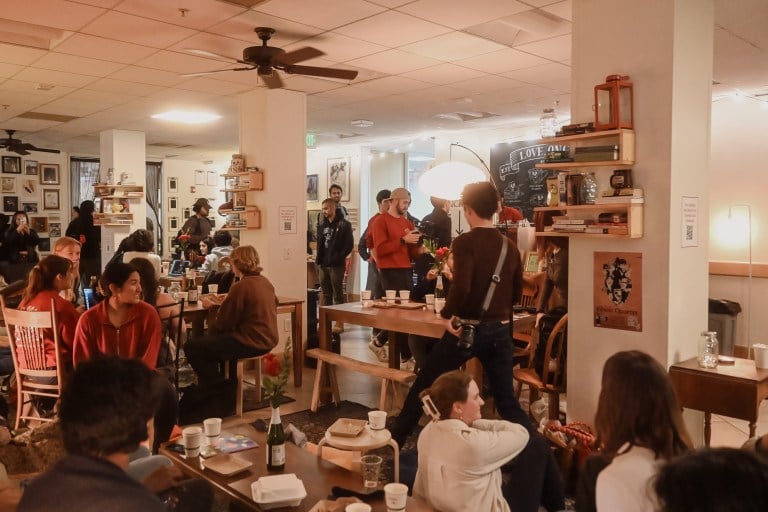The year 2021 saw many first’s for Stanford: a first full year back from COVID-19, the first year a young Divya Ganesan would enter campus and the first year of a new system for campus housing — the neighborhood system. As a freshman, I was assigned to live in Crothers Memorial and, by extension, became a Neighborhood N resident.
Administrators pitched this system as a way to help students “form really deep, lasting relationships over time.” My COVID-minted class, however, entered a campus where sophomores were confused and frustrated, with juniors and seniors feeling like they had been ripped off. No class really seemed like they felt a sense of community anymore. As a frosh, I didn’t know what to think. Would this “neighborhood system” really help make a difference?
It’s three years later now, and as a senior with three years of student government advocacy under my belt, I believe that the neighborhood system was spot-on in its diagnosis: Stanford’s subpar means of community building on campus. However, it fell flat on something deeper: Stanford students being uniquely positioned to build community on campus.
I strongly believe that Stanford’s culture of fun and reputation for building “deep, lasting relationships over time” will not return from institutional overhauls. Instead, it takes students leading the way on innovating community initiatives — and the administration, in turn, being willing to support them in the process.
In unprecedented ways, students have successfully taken it upon themselves to foster an authentic sense of community on campus. This has been most successful with student leaders receiving administrative and financial backing from the University. Speaking as a student advocate, I want to highlight three particularly successful student initiatives: In the Cards, Street Meat and On Call Café, as examples of how motivated students can be the force we all need to bring the “fun” back to Stanford.
In the Cards
The Stanford community has struggled to centralize communication around social events on campus. As the former director of community engagement for Associated Students of Stanford University (ASSU), I personally saw a lack of attendance to Neighborhood events and Office of Student Engagement-sponsored Cardinal Nights due to failed advertising. Past efforts include OSE newsletters, billboard ideas and even Fizz. But the University consistently failed to meet the students where they were at until Annie Reller ’24 and Emily Deng ’25 M.S. ’26decided they had enough.
They jumpstarted “In the Cards” — a simple, yet effective solution to our campus communication challenge. In the Cards is a weekly newsletter that tells students about the social, sporting and community happenings on campus. With easy access, student support and a great aesthetic, the newsletter has become a staple of me and my friends’ weekly routines. Its success demonstrates the power of simple, student-centered solutions to campus community challenges.
Street Meat
Whether students have just left Kappa Sigma (KSig) after dancing their heart out or finished a long study session, the desire for good late night food is a universal experience. Akshay Shah ’25, Caeden Greene ’25, Robert Kirchenbauer ’25 and Jack Fox ’26 tackled this head-on by creating Street Meats — a simple, student-run food truck that provides reasonably priced food for campus nightlife.
What started as a small truck has now turned into a full catering business. Through ASSU and neighborhood funding, Street Meat has provided food for club events and tailgates — with plans to potentially expand into fine dining. Getting quality and affordable late night food on campus doesn’t have to be a challenge for students. If Street Meat is any indication, it’s that the students themselves are uniquely aware of what their peers want. It shows that the primary role that the University should have, as President Jonathan Levin ’94 put it so eloquently, is to “be an enabling force” of student-led initiatives.
On Call Café
Peyton Klein ’25 saw that students needed a never-seen-before third place on campus and wouldn’t wait for any task force recommendations before making it happen. With initiative and strategy, she led the way on executing a pilot in the Haas Center that highlighted students’ desire for a late night alternative to Green Library or CoHo. On Call Café, an unprecedented student-led late night cafe, answered this call for community.
After a smashing success, she successfully petitioned the ASSU and the Office of the President for more funding. Now permanently located in Old Union, the café boasts an incredible student team of baristas and managers with its own payroll system. On Call Café getting to where it is was no easy feat, but it stands tall as a masterclass on students doing the work to build the best community spaces possible. The cafe shows that, with motivation and vision, students will be leading the way on community building going forward.
For me personally, student-led initiatives have been instrumental in helping me feel connected to my campus community. They have given me what, frankly, the neighborhood system failed to give. And these should be seen as evidence of the power we, as students, have to transform this school. We must harness that power.
What has always made Stanford so special is our ability to “do.” It is truly through channeling what has always made us unique that will bring us to a culture shift that we are all the better for. We are a community of doers. Where there’s a challenge, we see opportunity.
By looking beyond administrative mandates such as the neighborhood system, we can build community on our own terms. We have the good ideas. Through self-organizing and social innovation, we can lead the way on building the community relationships that have made and will continue to make Stanford so special.
